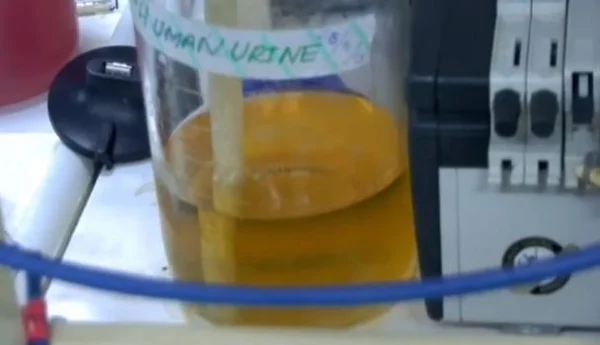Researchers have created a mechanism whereby human waste can be digested by microbes leading to a process of generating power from electricity. The first test involved using urine in microbial fuel cells to charge a mobile phone.
The next stage is EcoBots:
“We speculate that in the future, urine-powered EcoBots could perform environmental monitoring tasks such as measuring temperature, humidity and air quality. A number of EcoBots could also function as a mobile, distributed sensor network,” said lead study author Peter Walters, of the University of the West of England.
Back in 2011, the researchers at the University of the West had described their findings on Microbial Fuel Cells (MFCs). Their research was published in the Royal Society of Chemistry journal, Physical Chemistry Chemical Physics.

Robotics engineers have constructed a new device that can pump human waste into the “engine room” of a self-sustaining mechanical system, which employs a team of live microorganisms to digest the organic matter, in the process generating electricity to power the machine. (Photo : Institute of Physics via Nature World News)
The team estimated that we produce 6.4 trillion liters of urine every year so, why not use it for something useful. Initially, they made three MFCs with anode and cathode chambers. These electrodes were connected to 11 reservoir bottles where urine circulated in different concentrations. The urine was fresh or less than a week old. Yay. Taken from healthy sample providers so, no disease or infection.
The team ran the experiment for two years and discovered that that a steady volume of urine provided consistent power generation. The calculations showed that the average person could probably “fuel” 300 MFCs every day. Power to the people.
At the time, the lead researcher, Ioannis Ieropoulos, said: “With an annual global production rate of trillions of litres, this is a technology that could help change the world. The impact from this could be enormous, not only for the wastewater treatment industry, but also for people as a paradigm shift in the way of thinking about waste.”
The urine powered system used to charge a mobile phone is an extension of the original research. The design is a heart-like pump that controls the flow of urine to various chambers that fuel the MFCs. The MFCs electricity is stored in capacitance units as well as being used to self-regulate the production of electricity by controlling the pump.






